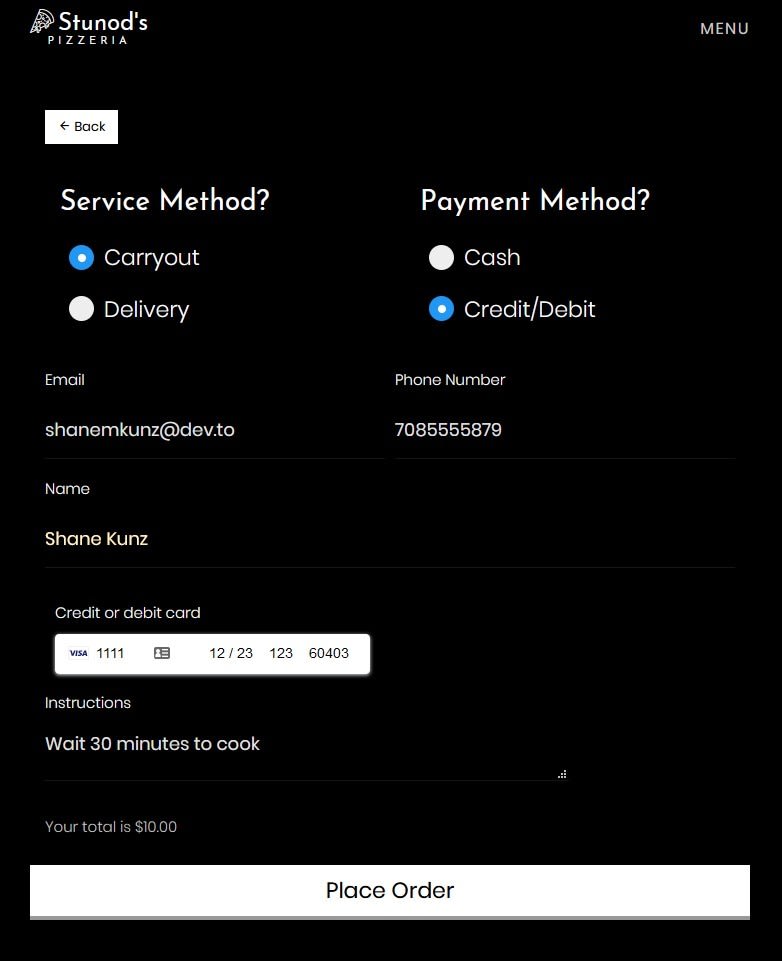I went ahead and installed .NET Core 2.2. I used a starter pizza related bootstrap 4 theme from colorlib for base CSS, with the only license requirement being a link to colorlib in the footer.
Once I had customized the pages and stylings, I started to build a Vue.js powered online ordering page. I used entity framework to build a database schema in an MS SQL Azure database.
I downloaded the Vue.js library file and put it in the /wwwroot/js which I include in the /Views/Order/index.cshtml file at the bottom as:
<script src="~/js/vue.js"></script>
<script src="~/js/orderpage.js"></script>
Views/Order/index.cshtml is the root Vue.js Template.
I initialize the root Vue.js instance in the /wwwroot/js/orderpage.js file with a function call similar to this:
var app = new Vue({
el: '#app'
)};
In the Vue.js initialization function call above, I set the data, computed, filters, methods, and a mounted life-cycle hook.
This is how the order page Vue.js app looks with the styling and after the Vue initialization has finished:

I include
<script src="https://js.stripe.com/v3/"></script>
in the /Views/Shared/_Layout.cshtml.
On the second step, checkout, if a user has selected credit as payment, a stripe credit card input appears because of the inclusion of following logic at the bottom of /wwwroot/js/orderpage.js:
$(document).ready(function () {
stripe = Stripe($('#StripeApiKey').val());
var elements = stripe.elements();
card = elements.create('card');
card.mount('#card-element');
card.addEventListener('change', function (event) {
var displayError = document.getElementById('card-errors');
if (event.error) {
displayError.textContent = event.error.message;
} else {
displayError.textContent = '';
}
});
});
The checkout step looks like this:

The Controllers/OrderController.cs houses all of the Ecommerce logic and APIs. I should probably split it into smaller files, but I haven't felt the need to yet.
The public IActionResult PlaceOrder(OrderParam order, bool pos = false) method is the entry point to placing an order. This method calls a lot of private methods, because if all the code was in one method, it would be too long. It does data validation based on certain options the customer selected. If the customer selected delivery, it will ask Google Map's API if the distance between the customer and the restaurant is less than a certain amount of miles.
The method private bool ValidateOrderPrices(OrderParam order, bool isPOS) validates the user's supplied cart prices to see if they match the prices in the database. isPOS tells the method if it should expect a delivery fee.
I charge the customer via Stripe if the customer selected the credit payment type and they are on the customer facing website online ordering system (http://stunodspizza.com/order)
The following code creates a Stripe charge:
var options = new ChargeCreateOptions
{
Amount = Convert.ToInt32(order.total*100),
Currency = "usd",
Description = "Stunod's Charge for "+order.email,
Source = order.stripeToken,
ReceiptEmail = order.email,
Metadata = metadata
};
var service = new ChargeService();
try{
Charge charge = service.Create(options);
}catch(Exception exception){
return Json(new{Success = false, Message="Unable to process credit/debit card."});
}
If the user did not select credit as a payment method, or the Stripe payment was successful, the order is saved to the database using the method private int SaveOrderToDatabase(OrderParam order, bool placedOnPOS).
The PlaceOrder method also generates emails by using replace string methods on text files for dynamic data. If the business has emails listed in the /appSettings.json, they will receive receipt emails. The customer will also receive an email receipt if a customer email was supplied in the order.
Text messages are also sent to business and/or customers via a simple Twilio API.
Within the PlaceOrder method, a PDF is generated with certain thin width dimensions using the library PdfSharp. This PDF gets sent via HTTPS to a python development flask server. The server gets booted by the client by double clicking a .sh file on a raspberry pi desktop. The .sh script also runs a noip library for use as a DDNS service. This allows the web app on Azure to send the PDF receipt to a URL that stays aware of the printer's router's IP address. The python development flask server receives, downloads, and prints the PDF receipt using CUPS and a nice print driver for the restaurant's TM-T20II POS Thermal Receipt Printer connected to the raspberry pi via USB. If you're interested in the printer setup, please check out the raspberry-pi/README.md when I release the source code at the end of this dev.to series.
Coming up next: a Vue.js CLI App walkthrough and tutorial
I walk you through building a web app that's a full point of sale, a
order history management app. a sales reporting app, and a Ecommerce CMS with
functionality for editing hours and menu items. The whole projects is in
a nested folder setup with the Vue
CLI. When we runyarn buildit will
place our Vue app in the/Views/POS/index.cshtmlwith its assets in
the/wwwroot/jsand/wwwroot/cssfolders. Both our
development and production builds will be able to hit API functions in
the/Controllers/OrderController.csby use of the
/pizza-pos/vue.config.js.



Top comments (1)
Hi Shane, I guess you don't plan to post more on this subject... ?